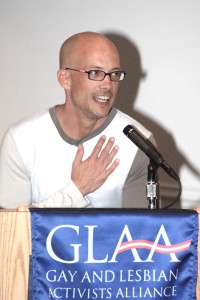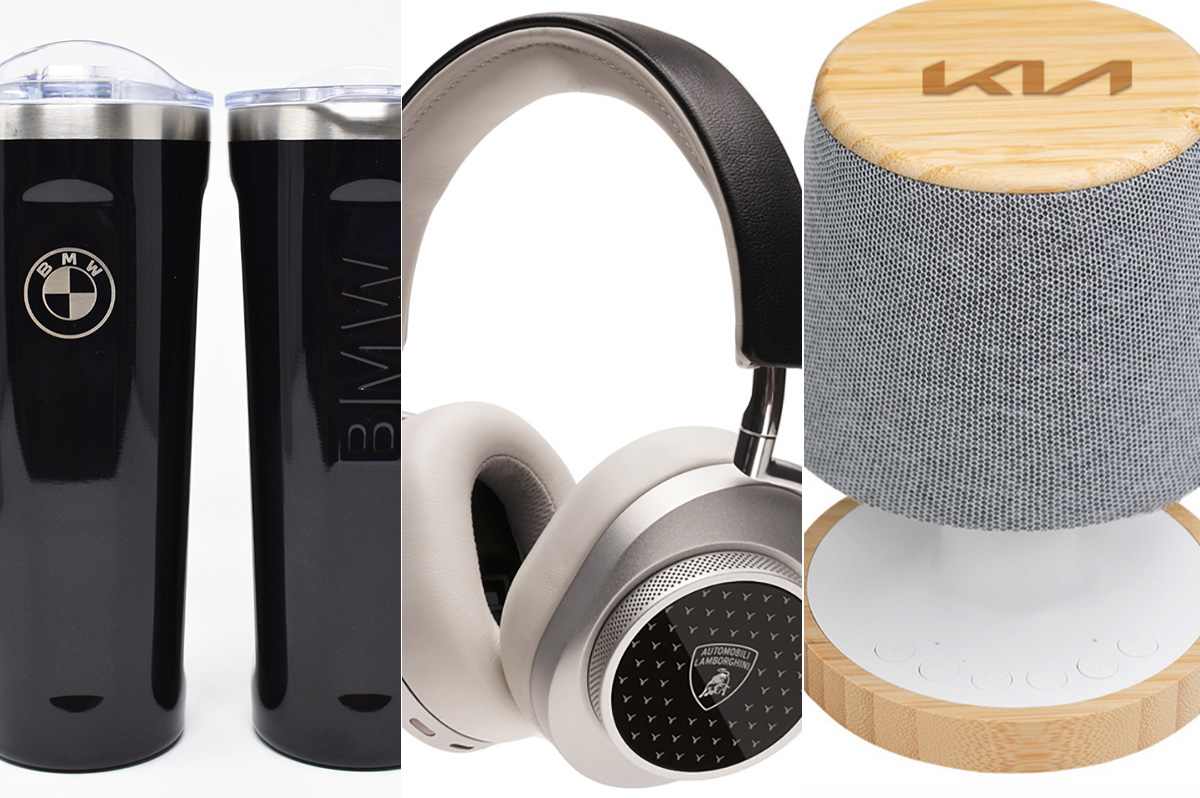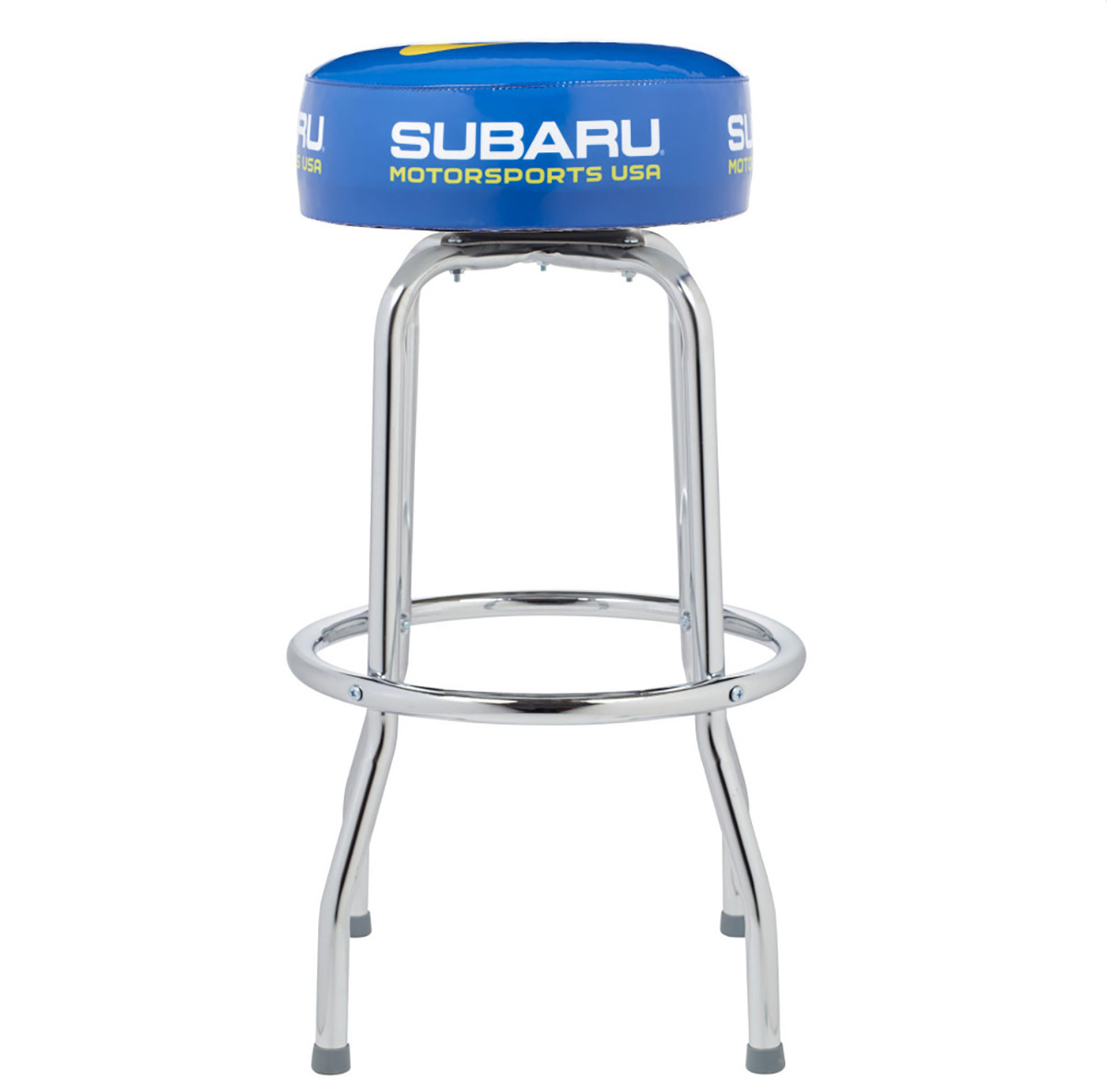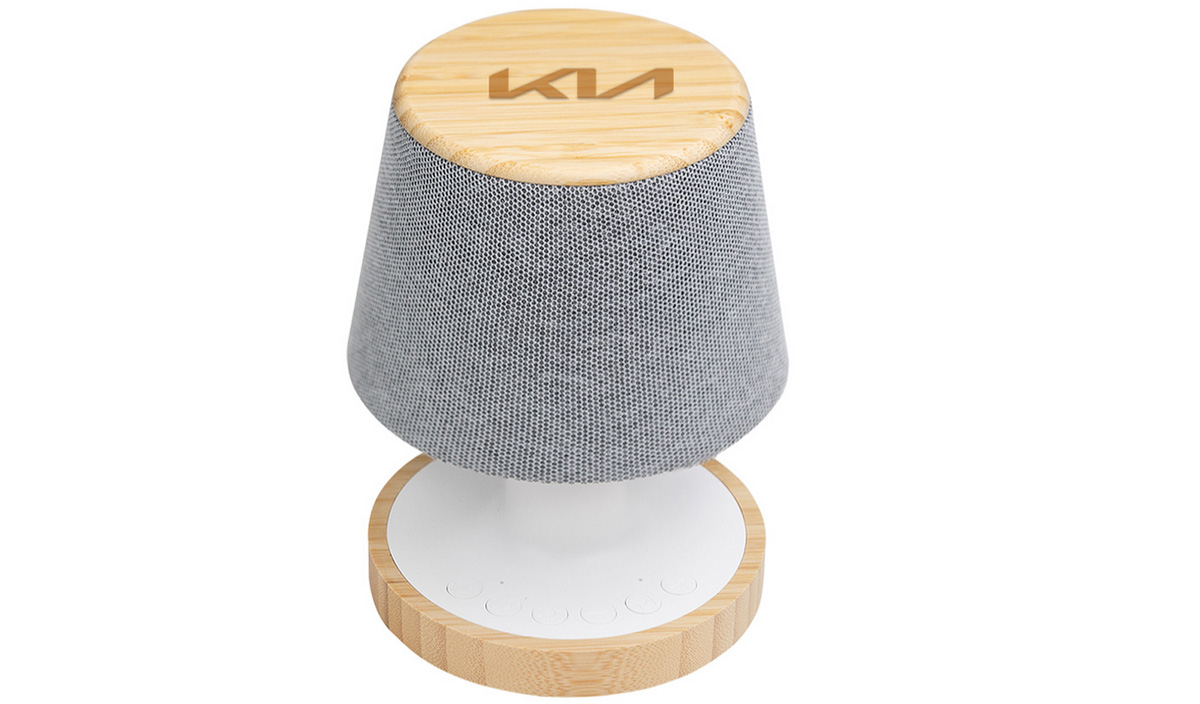Living
GLAA celebrates 40 years
Activists move from the street to the suite after 4 decades of work

Frank Kameny remembers seeing Paul Kuntzler, his campaign manager on a 1971 bid for Congress, walk into Temple Sinai on Military Road in Washington with large reams of paper rolled under each arm and an elated look on his face.
Kameny, who founded the gay liberation movement in D.C. after being fired from the federal government in 1957, needed 5,000 signatures to get on the ballot. With the late February deadline looming, the group only had about 1,300. Realizing outside help was needed, Kameny and Kuntzler thought a gay group in New York whom they found to be one of the few “getting much of anything done,” as Kameny puts it, might be able to help. The group — Gay Activists Alliance of New York — sent two busloads of people to blanket the District one Sunday afternoon to secure signatures.

A vintage 'Kameny for Congress' poster from 1971. This campaign inspired the launch of GLAA. (Image courtesy of Rainbow History Project)
A dance was held that night at the Temple and when Kuntzler arrived, the group knew it was home free. They had about 7,700 signatures — plenty to get Kameny on the ballot. The “Kameny for Congress” campaign ended with the candidate coming in fourth in a six-way race. Though he lost, the 1,900 votes he secured while running as a then-unheard-of openly gay candidate, galvanized local activists.
Kameny’s own Mattachine Society was fading as members began to find its formality anachronistic in the Vietnam era. And the D.C. Gay Liberation Front was too radical for some others. The Kameny campaign activists were so impressed with the GAA New York group, they used about $400 left in their coffers after the election to visit the Big Apple and find out how the group operated.
By about the third week in April, a D.C. chapter was formed in the apartment of Jim McClard, the local group’s first president. While the New York group folded about a decade later, Washington’s Gay Activist Alliance is celebrating its 40th anniversary this month (in 1986 then-president Lorri Jean — now head of Los Angeles’ mammoth LGBT Community Center — insisted on changing the name to Gay and Lesbian Activists Alliance, or GLAA as it is commonly known). It’s the oldest continuously active gay organization in the country.
The group celebrates Wednesday at the Washington Plaza Hotel in Thomas Circle. Kameny, now 85, will give his founder’s Champagne toast, as has become GLAA tradition. And the group will bestow its annual Distinguished Service Awards to six local activists. Minimum donations are $50. Visit glaa.org for more information.
Kameny says the group — which lists pages of political gains on its website — has thrived under strong leadership.
“Some of it has been sheer good luck,” he said. “Throughout the ’70s, ’80s and beyond, the group had a string of presidents who were absolutely superb. I said that frequently back then and I still say it. One after another, there were just a lot of great people. There may have been one or two duds, but they really had good people, good officers who kept the organization going. They kept it effective and were very dedicated.”
The group’s first effort was also its only formal collaboration with Mattachine and the local Gay Liberation Front — a protest of the 1971 American Psychiatric Association’s convention held that year in Washington. Though GLAA disavowed the use of force and worked to “act within the existing order,” that first effort involved storming the conference and seizing the microphone in an effort to convince APA brass that gays were not mentally ill.
“We couldn’t possibly be trusted with government secrets and security clearances if we were mentally disturbed,” Kameny said.
He chuckles at the tactics now and says the groups soon went in their own direction — GLAA with Robert’s Rules of Order for its meetings, a gay-specific focus and a strong commitment to non-partisanship.
“I used to attend the GLF meetings,” Kameny said. “They seemed to just drone on endlessly and you had the impression there was a small group meeting in the attic who really ran things. And they tried to tie in all the issues of the day. My feeling has always been if you try to do everything you end up doing nothing very well.”
Former president Craig Howell, who joined in 1973 and has been active ever since, admits the heavily political nature of the group’s work limits its appeal, but said its track record over 40 years speaks for itself.

The late Jeff Coudriet, a former GLAA president, speaks at the group's 2007 awards. (Blade file photo by Henry Linser)
“There’s always been a small number doing most of the work,” Howell said. “Many times we’d just be sitting there in the living room on [former president] Bob Carpenter’s couch. If we had four or five at a meeting, that was considered good. It’s always been very wonky, so that makes for limited people, but the devil is in the details and you have to go through that trivia to get what you want. But it’s worth paying the price.”
The group counts among its victories:
• Council’s 1973 passage of Title 34, which made Washington the first major U.S. city to outlaw discrimination against gays in housing, employment and public accommodations.
• Kameny’s 1975 appointment to the city’s Human Rights Commission, a first
• A 1978 gay rights rally, the largest of its kind to that time, to protest anti-gay singer Anita Bryant
• A 1979 public service campaign that required a court fight to allow “Someone you know is gay” posters to be placed at Metro stations
• Former president Mel Boozer’s 1980 speech at the Democratic National Convention
• Repeal of D.C.’s sodomy law in 1981
• A 1982 commitment from D.C. police for fair treatment of gays
• A 1986 Council bill that prohibited insurance companies from denying coverage to HIV-positive residents
• 1990 hate crimes legislation
• A 1992 domestic partnership bill
• A 1999 settlement in the Tyra Hunter case, a trans resident who was shunned and ridiculed by EMS workers following a car accident. She died in 1995.
• Part of a broad coalition that opposed an exception from the D.C. Department of Corrections from requirements in the D.C. Human Rights Act in 2008
• Marriage for same-sex couples in 2009
Current president Mitch Wood says the group is “really a labor of love” and that its non-partisan nature “allows us to build bridges across the political spectrum.”
It’s all volunteer and operates on a small budget of about $10,000 per year, most of which goes to maintain its website and blog and stage its annual awards reception. Money comes from nominal member dues — $25 per year — and ticket sales and donations. The group meets twice monthly for about 90 minutes, mostly at the Charles Sumner School but sometimes at the Wilson building. Meetings are usually followed by dinner and drinks, often at Dupont Italian Kitchen. New members are always welcome.
Among GLAA’s signature work is its candidate ratings. Members always point out the ratings should not be seen as endorsements, but they rank those running for local office based on questionnaire responses and members’ knowledge of the candidates’ records on gay issues, to rank them on a scale that runs from -10 to +10.
“Usually in every election cycle somebody working with one of the candidates or another gets unhappy that so-and-so didn’t get a high enough rating,” Rick Rosendall, the group’s vice president for political affairs and a former president, says. “So they’ll make some snarky comments, but because we back up so thoroughly how we arrive at our ratings, we can show the point breakdowns and their responses to the questions, so they know what went into the ratings. It’s a very open process, not some beauty contest score with us up in some ivory tower.”
Over the years, the group’s ratings gained heft. Though he notoriously voted against the marriage bill, Council member Marion Barry initially scored a -10 during his run for mayor in the early ’80s. The low score led him to work with the local gay community and for years he was seen as a supportive public official.
Rosendall said the group’s decades of groundwork pays off even in unlikely places. He cites the two Council members — Barry and Yvette Alexander — who voted against marriage, and also Council member Harry Thomas Jr., who opposed the infamous club relocation bill for gay bars in 2007.
“They’ve all at various times emphasized their pro-gay credentials,” Rosendall said. “Even though Barry did speak at one of Bishop [Harry] Jackson’s rallies in Freedom Plaza, it was a far cry from the hateful rhetoric you hear from state legislators. … And GLAA can take some of the credit for that, but the community has played a key role in this as well. … It’s not just a handful of policy wonks, it’s our community who has been active in this city since before home rule.”
Gay D.C. Council member Jim Graham, who’s received many perfect scores from the group, said he respects GLAA even when he occasionally disagrees with members.

Frank Kameny giving his traditional GLAA toast at the group's 2007 awards. (Blade file photo by Henry Linser)
“They put an enormous amount of sincere effort into it,” Graham said. “I mean they really do. It’s not anything they do in a casual way. And most recently I’ve been getting pretty much 10s, so you’re always happy with a perfect score.”
Rosendall says one big change over the years has been what he calls “street versus suite” activism. The group has moved away from demonstrations largely because it’s usually given a seat at the discussion table.
“As you get more power and influence, there’s less need to be standing outside,” he said. “That doesn’t mean there isn’t a place for groups like GetEqual. Different groups are good at different things. I like to say we’re working different parts of the vineyard.”
The group has, at times, faced criticism. Within the last four years or so, some activists, including Michael Crawford, said the group wasn’t moving fast enough on the marriage issue.
Rosendall said GLAA prides itself on avoiding excessive intramural fighting among other local activist groups.
“We really try not to let things deteriorate too much into personality and battles we don’t need,” he said. “We’ve tried to keep our collective eyes on the prize and the marriage victory demonstrated that. There’s no way we would have been doing all this policy work and building coalitions if we weren’t wanting it to happen. We just wanted to make sure it stuck.”
Graham said the group deserves praise for its tenacity, especially considering the era in which it launched.
“It’s difficult to imagine how very important and pioneering they were back in 1971,” Graham said. “In this day and age when we’ve made such progress, it’s important that we pause and acknowledge those who were there 40 years ago at a time when things were so very different. … The young men and women in our community really need to stop and realize this. We’re here because of these folks.”
Real Estate
Tips for LGBTQ buyers, sellers during holidays
A powerful and overlooked window for real estate transactions

The holiday season is a magical time, filled with celebration, travel, connection, and reflection. It also happens to be a powerful — and often overlooked — window for both buying and selling real estate. For members of the LGBTQ+ community, shopping for a new home or preparing to list a property during the holidays comes with opportunities, challenges, and important considerations that deserve thoughtful attention.
Whether you’re preparing to make a move as a same-sex couple, searching for safe and affirming neighborhoods, or hoping to secure the best possible price for your home sale before the new year, the holidays can offer unique advantages. With an inclusive approach, LGBTQ+ friendly resources, and the right professional guidance, this season can be a strategic and rewarding time to take your next real estate step.
Below are actionable tips, insights, and resources specifically tailored to LGBTQ+ home buyers and sellers navigating the holiday season.
Why the Holidays Can Be the Right Time
Lower Competition & Motivated Sellers
Because so many people put their real estate plans on pause during November and December, LGBTQ+ home buyers may see lower competition, fewer bidding wars, and sellers who are eager to close before January. This can bring real advantages for first-time gay home buyers or same-sex couples seeking more favorable negotiating terms.
Buyers Are More Serious
If you’re selling your home as an LGBTQ+ individual, remember: holiday buyers tend to be more intentional, financially prepared, and timeline-driven. This can make the sale process smoother.
Holiday Appeal Helps Homes Show Better
Warm lighting, seasonal décor, and neighborhood festivities can enhance curb appeal and emotional impact — which can be especially valuable when selling your home.
Tip #1: Choose LGBTQ-Friendly Representation
Above all else: work with a professional who understands the LGBTQ+ community and the unique concerns LGBTQ+ clients have.
This means choosing:
- a gay realtor
- a lesbian realtor
- an LGBTQ+ friendly real estate agent
Agents who are part of, or deeply familiar with, the LGBTQ+ community can make a tremendous difference in safety, comfort, and confidence throughout the transaction.
For more than 30 years, GayRealEstate.com has been the trusted leader in LGBTQ+ real estate, providing LGBTQ+ home buyers and sellers access to:
- verified LGBTQ+ real estate agents
- same-sex couple home buying experts
- LGBTQ+ friendly realtors near you
- agents experienced in discrimination-related protections
- LGBTQ+ relocation specialists
Whether you’re buying or selling, this starts you on the right path.
Tip #2: Focus on LGBTQ-Friendly Neighborhoods
If you’re buying a home during the holidays, make researching neighborhoods a top priority.
Look for areas known for:
- Inclusion & diversity
- Active local LGBTQ+ groups
- Gay-friendly businesses
- Visible LGBTQ+ community presence
- Supportive schools & services
- Pride events & alliances
Searching online helps — but talking with an LGBTQ+ friendly realtor who knows these neighborhoods firsthand is invaluable.
Also search:
- LGBTQ+ crime statistics
- local anti-discrimination policies
- protections against housing discrimination
- hate crime data
- political climate
- HOA regulations
Your home should feel safe year-round, not just festive in December.
Tip #3: Know Your Legal Protections
Housing discrimination still exists — and LGBTQ+ home buyers and sellers must remain vigilant.
While federal protections exist through the Fair Housing Act (as interpreted to include sexual orientation and gender identity), not all states provide equal protection.
Know your rights around:
- Mortgage discrimination
- Rental screening discrimination
- Sellers refusing offers from LGBTQ+ buyers
- HOA discrimination
- Harassment after move-in
Your agent should be able to assist — but GayRealEstate.com also offers educational guidance and resources for navigating LGBTQ+ legal protections in real estate
Tip #4: Navigate the Emotional Side
For LGBTQ+ buyers and sellers, the holidays can stir up complex feelings:
- family dynamics
- financial pressure
- expectations around marriage or partnership
- relocation stress
- memories tied to a home
Be patient with yourself.
Buying or selling a home is life-changing — honor the emotional journey as much as the financial one.
Tip #5: Take Advantage of Holiday Cost Savings
Buying?
- Lower interest rates may appear around December
- Contractors often discount home inspections & repairs this time of year
- Movers run holiday promotions
Selling?
- Minor seasonal upgrades help tremendously:
- warm lighting
- new evergreen planters
- festive front door accents
- Be careful not to over-decorate — buyers need to see the space clearly
And yes — holiday cookies help.
Tip #6: If You’re Relocating — Plan Ahead
Many LGBTQ+ buyers relocate during the holidays to:
- be closer to family
- move in with a partner
- begin a new job in the new year
If you’re relocating as an LGBTQ+ couple or family:
- research local LGBTQ+ resources
- connect with local LGBTQ+ organizations
- ask your gay real estate agent about local LGBTQ+ clubs, groups, and services
- evaluate long-term safety for LGBTQ+ families
Plan early — December moves get booked fast.
Tip #7: Use Trusted LGBTQ Real Estate Resources
The most important resource of all:
GayRealEstate.com — the #1 dedicated LGBTQ+ real estate resource for over 30 years.
On GayRealEstate.com, you can find:
- LGBTQ+ friendly real estate agents nationwide
- Verified gay and lesbian Realtors
- LGBTQ+ real estate market information
- Same-sex couple home buying guidance
- LGBTQ+ real estate services
- Gay and lesbian friendly neighborhoods
- Relocation tools
- LGBTQ+ home buyer & seller education
No other site offers this level of specialization, expertise, or community connection.
The holidays are more than just a season of celebration — they’re also a meaningful opportunity for LGBTQ+ home ownership, real estate transitions, and new beginnings. Whether you’re a first-time gay home buyer, a same-sex couple selling a home, or an LGBTQ+ family preparing to relocate, you deserve an experience grounded in respect, inclusion, and safety.
With the right preparation — and the right LGBTQ+ friendly real estate agent — your journey can be rewarding, affirming, and filled with new possibilities for the year ahead.
To find an LGBTQ+ real estate agent who understands your needs, visit GayRealEstate.com, the trusted leader in LGBTQ+ real estate services, resources, and representation for over three decades.
Scott Helms is president and owner of Gayrealestate.com.
Autos
Revving up the holidays with auto-themed gifts
Lamps, mugs, headphones, and more for everyone on your list

Here’s how to shift your holidays into high gear.
Bentley Bottle Stopper

Pop your cork—in a good way—with a Bentley bottle stopper ($106), made of zinc alloy with chrome plating and rubber rings. The classy design is inspired by the automaker’s iconic “Flying B” mascot from 1930.
Subaru Motorsports Counter Stool

Belly up to the bar with the Subaru Motorsports Counter Stool ($175). The 30-inch-tall metal chair—with padded vinyl cover and automaker logo—is lightweight and swivels 360 degrees.
BMW Luxe Luggage

You won’t have trouble spotting this chic khaki-green BMW M Boardcase ($307) at airport baggage carousels. The high-performance “M” logo is etched on the durable polycarbonate casing, as well as on the main compartment zipper and all four of the sturdy double wheels. Comes with recycled lining, along with laundry and shoe bags.
Ford Yoga Gym Bag

The Ford Yoga Gym Bag ($15) has a wide handle and button strap to securely carry a yoga mat, as well as convenient pockets to stow water bottles and shoes. Made of black polyester, with reflective silver Ford logo. (Yoga mat not included.)
Kia Mini Lamp with Speaker/Sound

It doesn’t get much more Zen than a Kia Mini Lamp with Speaker and Sound Machine ($50). Made of bamboo, sturdy plastic and a fabric grill, the tiny wireless lamp has LED lighting with three settings. Pair with your phone to choose from eight soothing sounds: brook noise, bird chirp, forest bird, white bird, ocean wave, rainy day, wind and fireside.
Lexus Green Pro Set

Practice makes perfect with the Lexus Green Pro Set ($257), a putting mat with “train-track markings” to help improve any golfer’s alignment. Lexus logo on the wood frame with automatic ball return.
Lamborghini Wireless Headphones

Turn on, tune in, drop out—well, at least at the end of a hectic day—with these Lamborghini Wireless MW75 Headphones by Master & Dynamic ($901). Batteries last up to 32 hours or up to 28 hours in active noise-canceling mode.
BMW Quatro Slim Travel Tumbler

The BMW Quatro Slim Travel Tumbler ($23) lives up to its name: sleek, smooth and scratch-resistant. Comes with leak-proof lid and non-spill design.
Ford Vintage Mustang Ceramic Mug

Giddy-up each morning with the Ford Vintage Mustang Ceramic Mug ($29). With cool blue stripes, the 14-ounce mug features a silver handle and iconic pony emblem.
My First Lamborghini by Clementoni

Proving it’s never too early to drive an exotic car, My First Lamborghini by Clementoni ($62) is for children ages two- to four-years old. Kids can activate the remote-control car by pressing the button on the roof or by using the remote. This Lambo certainly is less expensive than an entry-level Huracan, which starts at $250,000.
Rolls-Royce Cameo

For adults looking for their own pint-sized luxury ride, there’s the Rolls-Royce Cameo ($5,500). Touted as a piece of art rather than a toy, this miniature collectible is made from the same solid oak and polished aluminum used in a real Rolls. As with those cars, this one even has self-leveling wheel-center caps (which operate independently of the hubcaps so that the RR logo is always in the upright position).
Maserati Notebook

For those of us who still love the art of writing, the Maserati MC20 Sketch Note ($11) is an elegant notebook with 48 sheets of high-quality paper. The front and back covers feature stylish sketches of the interior of a Maserati MC20 supercar and the Maserati logo. Comes with saddle-stitched binding using black thread.
Dodge Demon Dog Collar

If your pooch is more Fluffy-kins and less the guard dog you sometimes need it to be, then there’s the Dodge Demon Seatbelt Buckle Dog Collar ($30). Made of steel and high-density polyester with a tiny seatbelt-buckle clasp, the collar is emblazoned with devilish Dodge Demon logos.
Real Estate
In real estate, it’s déjà vu all over again
1970s and ‘80s volatility led to creative financing options

In the 1970s and 1980s, mortgage interest rates climbed into the double digits and peaked above 18%. With rates like that, you needed more than a steady job and a down payment to buy a home — you needed creative financing ideas.
Today’s market challenges may look different, but the response has been surprisingly familiar: unusual financing methods are making a comeback, along with some new ones that didn’t exist decades ago. Here is a brief overview of the most popular tools from that era.
Assumable Mortgages were available with FHA, VA, and USDA loans and, until 1982, even Conventional mortgages. They allowed a buyer to take over the seller’s existing mortgage, including its interest rate, rather than getting a brand-new loan, while compensating the seller for the difference between the assumed loan balance and the contract price.
Often, a seller played a substantial role in a purchase. With Seller Financing (Owner Carry) the seller became the bank, letting the buyer make payments directly to them instead of to a traditional lender.
One variation on Seller Financing was the Land Contract. The seller was still the lender, but the buyer made loan payments to the seller, who then paid his own mortgage and pocketed the difference. The buyer would receive equitable title (the right to use and occupy the property), while the seller kept the title or deed until the contract was paid off or the property sold.
With Wraparound Mortgages, the seller created a new, larger loan for the buyer that “wrapped” around the existing mortgage at an agreed-upon rate. The buyer would then pay the seller, who would continue making mortgage payments on the existing balance, collecting payments and pocketing the spread. Whether title conveyed to the buyer or remained with the seller was negotiated between the parties.
Unlike an assumption, when buying a home Subject To an existing mortgage, the buyer took title to the property and agreed to pay the seller’s mortgage directly to the lender plus any equity to the seller; the mortgage stayed in the seller’s name. Now, most mortgages have a Due on Sale clause that prohibits this kind of transaction without the expressed consent of the lender.
Rent-to-Own was also a popular way to get into a home. While a potential buyer rented a property, the seller would offer an option to purchase for a set amount to be exercised at a later date (lease option) or allow a portion of the rent collected to be considered as a downpayment once accrued (lease purchase).
Graduated Payment Mortgage (GPM) loans were authorized by the banking industry in the mid-1970s and Adjustable Rate Mortgages (ARM) surfaced in the early 1980s. Both featured low initial payments that gradually increased over time.
With the GPM, although lower than market to start, the interest rate was fixed and payment increases were scheduled. A buyer could rely on the payment amount and save accordingly.
ARMs, on the other hand, had interest rates that could change based on the market index, with less predictability and a higher risk of rate shocks, as we saw during the Great Recession from 2007-2009.
While mortgage rates today aren’t anywhere near the extremes of the 1980s, buyers still face a tough environment: higher prices, limited inventory, and stricter lending standards. That combination has pushed people to explore tried and true alternatives and add new ones.
Assumable mortgages and ARMs are on the table again and seller financing is still worth exploring. Just last week, I overheard a colleague asking about a land contract.
Lenders are beginning to use Alternative Credit Evaluation indicators, like rental payment history or bank cash-flow analysis, to assess borrower strength when making mortgage loan decisions.
There are Shared Equity Programs, where companies or nonprofits contribute part of a down payment in exchange for a share of the home’s future appreciation. With Crowdfunding Platforms, investors pool money online to finance real estate purchases or developments.
Another unconventional idea being debated today is the 50-year mortgage, designed to help buyers manage high home prices. Such a mortgage would have a 50-year repayment term, rather than the standard 30 years, lowering monthly payments by stretching them over a longer period.
Supporters argue that a 50-year mortgage could make monthly payments significantly more affordable for first-time buyers who feel priced out of the market. Critics, however, warn that while the monthly payment may be lower, the lifetime interest cost would be much higher.
What ties the past and present together is necessity. As long as affordability remains strained, creative financing – old and new – will continue to shape the way real estate gets bought and sold. As with everything real estate, my question will always be, “What’s next?”
Valerie M. Blake is a licensed Associate Broker in D.C., Maryland, and Virginia with RLAH @properties. Call or text her at 202-246-8602, email her at [email protected] or follow her on Facebook at TheRealst8ofAffairs.




















